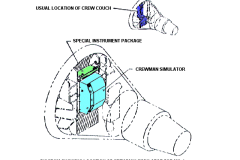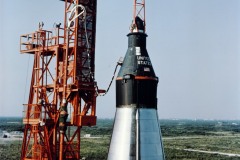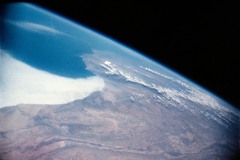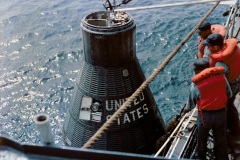Mercury-Atlas 4 (MA-4) was an unmanned test flight as part of the Mercury program.
The launch took place on September 13, 1961, at 14:04 UTC, from Launch Complex 14 in Cape Canaveral, Florida.
Completely orbiting the Earth, it was the first successful orbital flight under this program, as all previous flights were either ballistic or had to be aborted.
The flight was primarily used to test the ground stations required for orbital flights (Mercury Tracking Network). There was also a simulator system in the Mercury capsule that was supposed to simulate a human. This included testing environmental controls and life support systems, two cassette recorders to test communications with ground stations, three cameras and instruments that recorded noise, vibration and radiation levels.
After one orbit around the Earth, the capsule splashed down 283 km east of Bermuda. She was recovered after one hour and 22 minutes by the American destroyer USS Decatur.
The Mercury capsule #8 (which remained undamaged in the aborted MA-3 mission due to the error-free function of the rescue system) and the Atlas 88-D were used for the mission.
MA-4 had successfully achieved all of its objectives. It had demonstrated the ability of the Atlas rocket to carry the Mercury capsule into orbit and that the capsule and its systems could operate fully autonomously, and had succeeded in obtaining images of Earth. However, to be on the safe side and try out a few more design changes, NASA still planned one more unmanned test before using the Mercury-Atlas combination for a manned flight.
Mission data |
|
|---|---|
Mission |
Mercury-Atlas 4 (MA-4) |
Rocket |
Atlas 88-D |
Spacecraft |
Mercury capsule #8A |
Launch date |
September 13, 1961 |
Launch site |
Launch Complex 14 (LC-14), Cape Canaveral, Florida |
Landing date |
September 13, 1961 |
Mission duration |
1 h 49 min 20 sec |
Orbits |
1 |
Recovered by |
USS Decatur |
Altitude |
229 x 160 km |
Distance |
41,919 km |
Velocity |
28,205 km/h |
Max G |
7.7 g |






